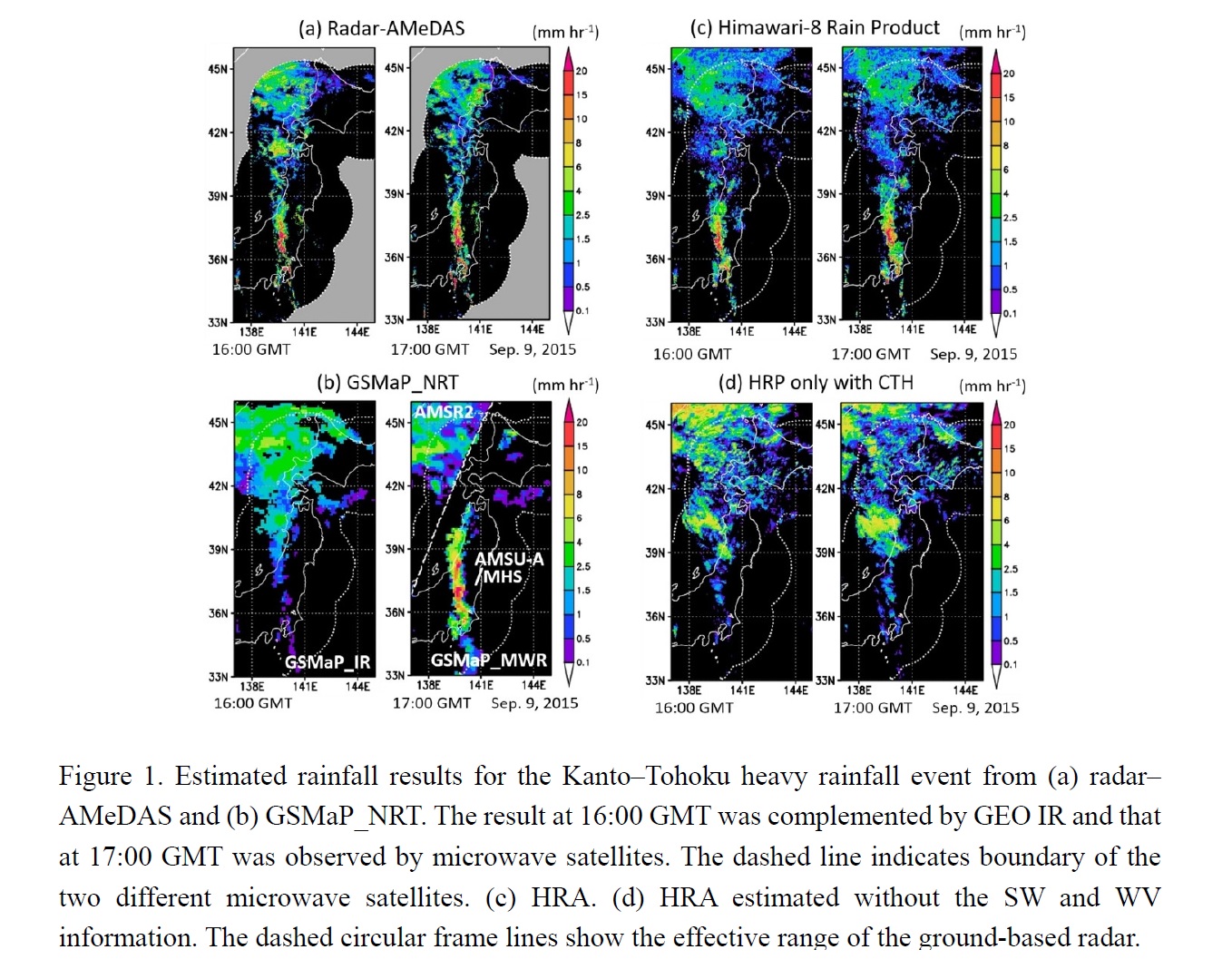Graphical Abstract
Hirose, H., S. Shige, M. K. Yamamoto, and A. Higuchi, 2019: High temporal rainfall estimations from Himawari-8 multiband observations using the random-forest machine-learning method. J. Meteor. Soc. Japan, 97, 689-710.
https://doi.org/10.2151/jmsj.2019-040
Graphical Abstract with highlights
Plain Language Summary: The Himawari-8 Rainfall estimation Algorithm (HRA) was developed by using the Random Forest (RF) machine-learning method. Training data is obtained from an Infrared (IR) radiometer of a third-generation geostationary meteorological satellite (GEO), Himawari-8, and Ku-band precipitation radar on board the Global Precipitation Measurement (GPM) core observatory. HRA could estimate heavy rainfall from warm-type precipitating clouds in Kanto-Tohoku heavy rainfall events although the Global Satellite Mapping of Precipitation (GSMaP_NRT) could not estimate such heavy rainfall when microwave satellites were unavailable.
Highlights:
- We introduce a novel rainfall-estimating algorithm only from GEO IR observations, called HRA.
- A statistical analysis showed that the warm-type heavy rain seen in the Asian monsoon region occurred frequently when there were small BT differences between the 6.9-μm and 7.3-μm of water vapor bands (ΔT6.9–7.3), which is first to be analyzed by GEO after the launch of Himawari-8.







